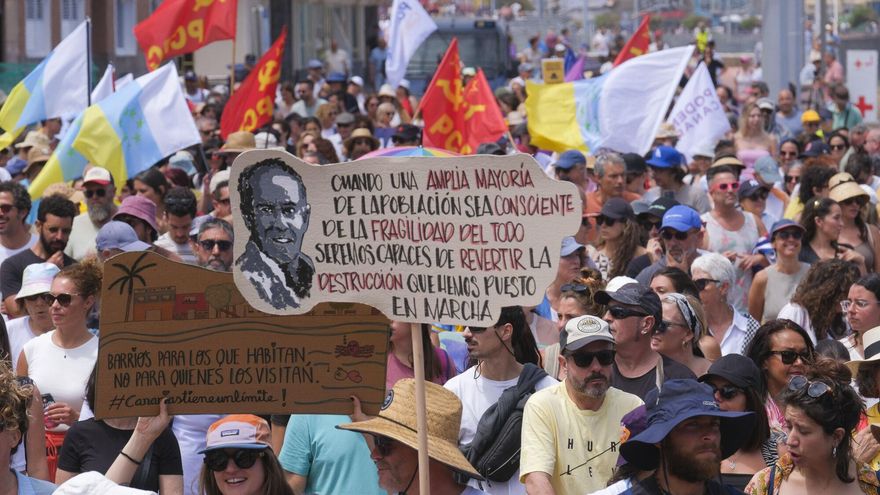
Certainly, first and foremost, one must disengage from the lamentable tussle over figures. Yesterday, from midday, a comprehensive array of recreational statistics was announced on Twitter (post x) indicating that “over” 100,000 individuals thronged the centre of Santa Cruz de Tenerife, summoned by the «Citizen Movement: Canary Islands has a limit». The Government Delegation estimated around 15,000 demonstrators in Santa Cruz de Tenerife and approximately 5,000 in Las Palmas de Gran Canaria. If we refine these evaluations using standard measuring protocols, we arrive at figures of about 11,000 in one city and roughly 3,500 in the other. Although these figures are lower than those from the previous two events, they are not without significance. This disparity in turnout between Tenerife and Gran Canaria is particularly striking, especially when one considers that the most severe assault on biodiversity and the environment in the nation is currently underway due to the Chira project. Mysteriously, however, this situation is viewed as an egregious ecological menace, while the destruction of the biological richness of the Arguineguín ravine is merely treated as a somewhat quaint local anecdote. Presently, there is no other tourism initiative within a Canarian ecosystem that possesses such damaging potential as the central project stemming from Antonio Morales’ almost obsessional advocacy, which surprisingly enjoys the backing of all political factions represented in the Grancanario Cabildo. Yet regarding the lawlessness at Chira, silence prevails.
Fewer demonstrators and a growing criticism of the political establishment. However, the entrepreneurs seem unaffected. These nefarious business figures always remain shrouded in metaphor. They lack names and identities, perhaps because their actions, apparently, are disguised under various legal terms. Abusing politicians remains a melancholic endeavour rather than a solution, akin to the meandering reflections found in blogs and social media platforms, or replicating articles that no one reads, which justifies the farcical rebuttals detailed by an old rogue who has not forgiven me for labelling him foolish twenty years ago. Continue your journey. Persist in your grumbling.
The tone has grown more dramatic in statements, chants, and placards. A woman, who encapsulated the essence of the demonstration, voiced into a microphone that “Tourism is killing us” (sic). I presume she refers to the Canaries. Another recurring chant at various locations proclaimed that islanders had become slaves (sic) to Europeans. The positive aspect of these manifestos is their articulation of increased dissatisfaction regarding an intensive tourism model characterised by high energy demands and environmental costs. While this model undoubtedly creates jobs and stimulates the service sector, it simultaneously complicates the redistribution of wealth. Conversely, the downside—nearly inevitable—is oversimplification, caricature, and the propagation of a fallacious belief that mere political will can rectify all the negatives associated with tourism. True political efficacy is reflected in policies formulated and implemented precisely when political will falls short, which is almost always the case. Between 2019 and 2023, hotel and extrahotel occupancy rates in the Canary Islands declined by 8%. From the start of next year, almost 5% is anticipated to be recovered.
Tourism is both a significant part of the Canary Islands’ challenges—low productivity, inadequate salaries, high housing prices and rental costs, energy consumption, and pollution—and a critical element of the solution (as there is no feasible long-term economic alternative). To call upon the political class for a reformist approach (which is, in some areas, timidly beginning to emerge) is a civic duty. To assume that democratic legitimacy lies solely in protests and that change is inherently beneficial, accompanied by moral outrage and fleeting ideas, is naïve, if not sheer cunning. A year remains as unchanged as yesterday.
















